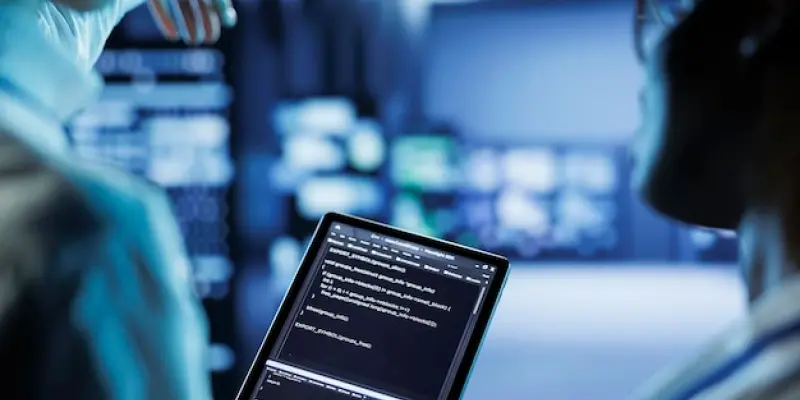Cybersecurity breaches originating from third-party vendors and partners now constitute a significant portion of overall incidents, with some reports indicating that over 60% of such events are traceable to these external entities. Given the complex web of suppliers, contractors, and service providers that modern organizations rely upon, the task of safeguarding sensitive data becomes increasingly critical for Chief Information Security Officers (CISOs). Recent high-profile incidents involving compromised software updates and credential leaks have underscored the vulnerabilities within the supply chain, making it imperative to adopt advanced, proactive strategies in managing third-party risks.
Risk-Based Vendor Tiering
One effective approach CISOs can take is implementing risk-based vendor tiering, which involves categorizing vendors according to their access to critical systems and sensitive data. This classification enables organizations to prioritize their scrutiny and resources towards higher-risk vendors. High-risk vendors, those with extensive access or integral roles, should be subject to in-depth evaluations, including stringent security assessments and potential on-site audits to ensure compliance with security protocols.
This risk-based approach allows for a more focused allocation of resources, ensuring that the most vulnerable points in the supply chain receive the attention they warrant. Regularly reassessing the risk posture of vendors ensures that the categorization remains up-to-date, reflecting any changes in business relationships or the cyber threat landscape. Risk management strategies must evolve alongside these changes to maintain an effective defense against potential breaches.
Continuous Monitoring Frameworks
At the core of effective third-party risk management lies the need for continuous monitoring frameworks. Traditional static audits, typically performed annually, are proving inadequate in the face of ever-evolving cyber threats. Instead, technologies like Security Ratings Services should be employed to provide real-time evaluations of a vendor’s external attack surface. These services leverage threat intelligence to detect and report vulnerabilities continuously, ensuring that security assessments are always current and reflective of the actual risk environment. Implementing such continuous monitoring capabilities allows organizations to detect and respond to potential threats promptly. This proactive stance helps in mitigating risks before they can be exploited by malicious actors. Additionally, integrating these monitoring tools into a broader risk management strategy can help organizations maintain a comprehensive view of their security posture, enabling quicker decision-making and more effective incident response.
Contractual Enforcement of Security Standards
Embedding stringent cybersecurity requirements into legal agreements with vendors is another critical step for CISOs. Effective contracts should outline specific security measures vendors must adhere to, including clauses on breach notification and financial penalties for non-compliance. The inclusion of right-to-audit provisions ensures that organizations retain the ability to verify vendor compliance through periodic assessments and audits.
These contractual obligations provide a clear framework for expected security practices and create an enforceable standard to which vendors must adhere. By holding vendors accountable through these agreements, organizations can reduce the likelihood of security lapses and ensure a higher degree of vigilance in their supply chain. This formalized approach to security enforcement underscores the importance of maintaining robust cybersecurity measures across all third-party relationships.
Zero Trust Access Controls
Limiting third-party access to only what is necessary is a fundamental principle of Zero Trust security models. Implementing least privilege access for vendors involves several key steps, such as network segmentation to isolate sensitive data and systems, multi-factor authentication (MFA) to enforce strong access controls, and just-in-time (JIT) access to provide temporary permissions only when needed. These measures collectively reduce the risk of unauthorized access and mitigate the potential damage should a breach occur.
Network segmentation ensures that even if an attacker gains access through a third-party vendor, their movement within the network is restricted, minimizing the potential impact. MFA adds an additional layer of security by requiring more than one method of authentication, making it more difficult for unauthorized users to gain access. JIT access further enhances security by limiting the duration of access, ensuring that permissions are not left open indefinitely.
Incident Response Collaboration
To maintain a robust defense against cyber threats, developing joint incident response playbooks with key vendors is essential. These playbooks should outline the specific roles and responsibilities of both the organization and its vendors during a security incident. Conducting regular tabletop exercises to simulate potential breaches can test and refine these protocols, ensuring that communication channels are clear and response strategies are effective. Collaborative incident response enables organizations and their vendors to respond to breaches swiftly and effectively. Simulated exercises help identify potential gaps in the response process, allowing for adjustments and improvements before a real incident occurs. This practice fosters a culture of preparedness and collaboration, which is critical in minimizing the impact of cyber attacks.
Future Considerations and Strategic Assets
Cybersecurity breaches caused by third-party vendors and partners make up a substantial portion of overall incidents. Reports suggest that over 60% of these breaches can be traced back to external entities. Given the intricate network of suppliers, contractors, and service providers that modern organizations depend on, the responsibility of protecting sensitive data becomes increasingly vital for Chief Information Security Officers (CISOs). High-profile incidents involving compromised software updates and credential leaks highlight vulnerabilities within the supply chain, emphasizing the need to adopt advanced, proactive strategies to manage third-party risks effectively. These attacks demonstrate that not only are internal security measures crucial, but organizations must also extend their vigilance to cover external partners. Effective management includes continuous monitoring, regular audits, and stringent access controls to ensure the integrity and security of data. As cyber threats evolve, maintaining a robust defense against third-party risks is essential to safeguarding an organization’s information assets.

